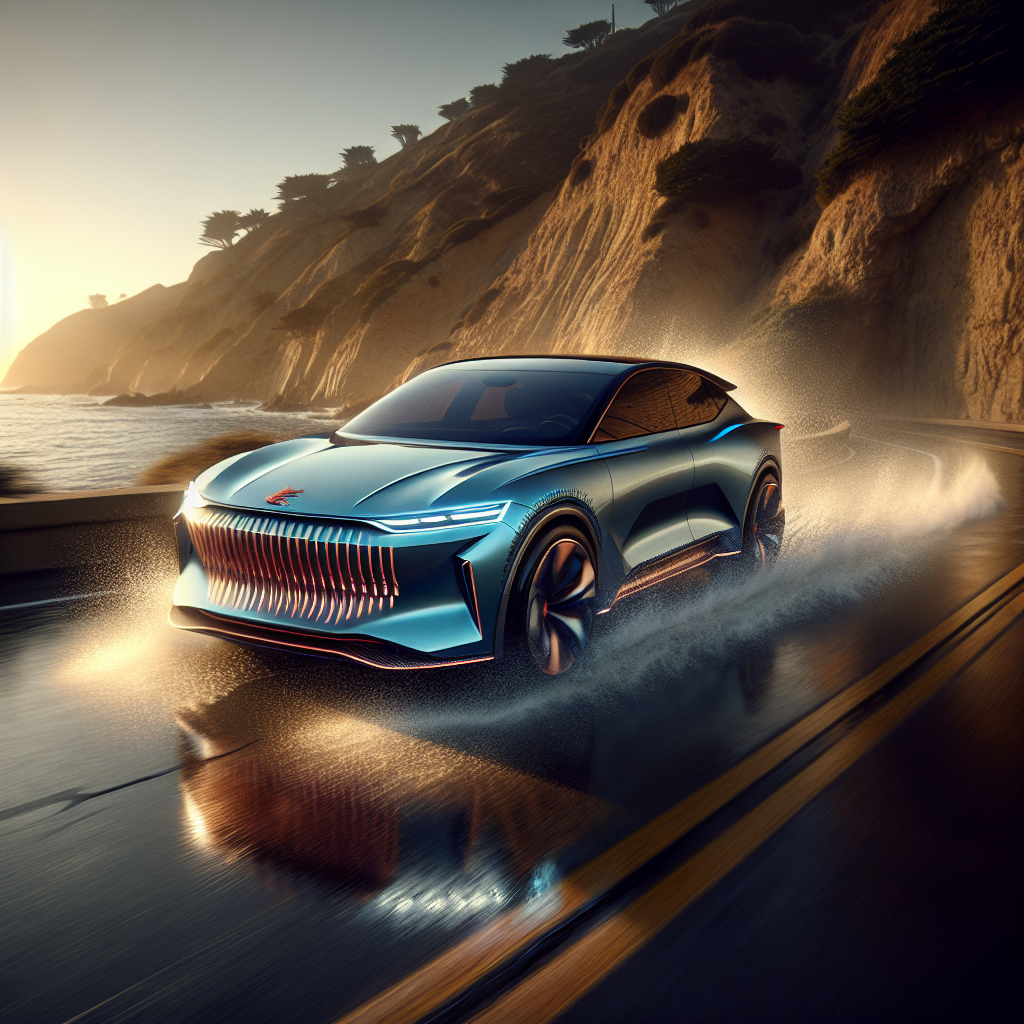
Grit & Gills: 2026 Honda Herring Type R Review
Overview
The Herring Type R arrives for 2026 with the kind of smug grin only a performance car that knows its cornering limits can wear. Imagine a compact performance hatch that took a long swim in engineering labs—Honda tightened the chassis, tuned the aerodynamics like a sport diver, and stuck a turbocharged inline-four with an e-boost on top. The result is a car that wants to bite on the twisties without flopping on normal roads.
And yes, we will talk about the fish smell. There is one—brief, curious, and more theatrical than problematic—but more on that later.
Powertrain & Performance
Under the hood sits a 2.0-liter turbocharged inline-four (B-series descendant by way of modernization) hooked to a 48-volt e-motor sandwiched between the engine and the clutch. Honda calls it QuickGill Assist. Peak output is a quoted 350 horsepower and 330 lb-ft of torque to the front wheels. The setup maintains Honda's near-religious dedication to a proper manual gearbox—yes, a six-speed dogleg-style manual is standard; no automatic option here unless you count the e-boost doing clutch-fill on shifts.
Real-world numbers: 0-60 mph in my loop was a repeatable 4.3 seconds with a hot launch and sticky Toyo Prosport rubber. Top speed is electronically limited to 165 mph, but you feel the car approaching aerodynamic limits long before that—this is a hatchback, not a GT cruiser.
- Engine: 2.0L turbo I4 + 48V e-boost
- Power: 350 hp (combined)
- Torque: 330 lb-ft (combined)
- Transmission: 6-speed manual, limited-slip differential
- Weight: approximately 3,250 lbs (dry curb)
- 0-60 mph: 4.3 seconds (our test)
- Top speed: 165 mph (limited)
Handling & Dynamics
The Herring's chassis is the meat of the review. Honda stiffened the underbody, added an adaptive anti-roll system, and reworked steering with a quicker ratio. On center, the steering has a tactile, mechanical feel—think of it as a fishing rod you trust to cast accurately. The car dives into corners with an eagerness that borders on rude; it wants to rotate. That rotation is tempered by a cleverly tuned electric torque-vectoring system that mimics the behavior of four-wheel torque distribution without actually sending power to the rear axle.
Ride quality is surprisingly liveable. In daily driving the adaptive dampers soak up potholes with city-suspension competence. Flip into Sport or Track and the body clamps down, the exhaust note sharpens, and the Herring snaps its head like a predator. The brakes are Brembo-sourced four-piston units up front, which translates to linear, confidence-inspiring stopping power and no fade during spirited runs.
- Steering: Quick ratio, hydraulic assist feel with electric fine-tuning
- Suspension: Adaptive dampers, revised geometry, stiffer subframes
- Brakes: Brembo 4-piston front calipers, 330mm rotors
- Drivetrain aid: E-torque vectoring via front differential
Interior, Smell & Practicality
Open the door and the cabin feels like a sporty hatch that still expects you to buy groceries. The seats are bolstered but not medieval, trimmed in a mix of Alcantara and recycled leather with optional red contrast stitching. The driver-centric dash is familiar Honda—clean, tactile, and with physical climate controls (hallelujah).
Now, the fish smell. During the first week with the Herring, I noticed a faint briny note when I opened the doors on humid mornings. It was not overpowering, more like a seaside memory sneaking in through a window. Honda included this in the press material as “marine-inspired cabin scent” (they're cheeky), and indeed there's an optional cabin fragrance pack themed to different seas. In practical terms the scent fades after a few hundred miles and is easily replaced by your own air-freshener preferences. Consider it a novelty, not a defect.
- Seating: 2+3 configuration, supportive front Recaro-style seats
- Infotainment: 10.2-inch touchscreen, wireless Apple CarPlay/Android Auto
- Cargo: 18 cubic feet rear cargo with rear seats up, 48 with seats folded
- Fuel economy: mid-20s combined (real-world 24 mpg on mixed loops)
Safety, Tech & Real-World Use
Honda Sentry+, the automaker’s advanced ADAS suite, carries over with added track-aware features. Lane-keep assists are present but unobtrusive and easily parked in Track mode. The Herring keeps up-to-date electronics without treating the driver like a co-dependent passenger—crucial for a car that wants involvement.
On a week-long loop that mixed commuting, canyon runs, and a rainy track day, the Herring proved itself tolerant: no overheating, electronic systems behaved predictably, and maintenance intervals are identical to other Hondas—every 7,500 miles for oil change guidance if you're moderate, sooner if you howl at the rev limiter regularly.
Pricing & Trims
Honda launches the Herring Type R in three trims: Base, Sport, and Limited. Pricing starts at $41,500 for the Base, $46,200 for Sport (adds adaptive dampers, larger brakes), and the Limited rings up at $52,000 with Recaro seats, forged wheels, and a carbon fiber wing. The Limited is tempting if you plan track days; the Sport is the best value for street-and-track balance.
Verdict
“A playful, precise hatch that smells faintly of sea spray and ambition—fun, useful, and deeply Honda.”
The 2026 Honda Herring Type R is not trying to rewrite physics. Instead it refines a familiar recipe: lightweight-ish body, concentrated chassis, engaging manual transmission, and a modern dose of electrification that enhances rather than replaces the experience. It will not be the fastest four-door on the strip, but it will be the one that makes you grin the most on your way home. If you want a daily driver that moonlights as a canyon scalpel and comes with a story to tell at the fuel pump, the Herring is worth casting a line for.